Intense heat, deadly snakes, gruelling challenges: Behind the scenes of Qld Survivor set
Conditions were tough when Australian Survivor moved into Cloncurry, Outback Queensland, from relentless heat to crocodiles and 60 snakes, including this encounter with a 13ft intruder at tribal council. WATCH THE VIDEO
QWeekend
Don't miss out on the headlines from QWeekend. Followed categories will be added to My News.
It’s day 31 on the new season of Australian Survivor when I arrive at Chinaman Creek Dam, a popular rest stop outside Cloncurry in Queensland’s northwest.
A hoard of trucks and production tents are clustered on the banks of the dam, abuzz with producers, cameramen, divers and drone operators, and pontoons adorned with recognisable tribal banners wait in the water for the upcoming reward challenge on the popular reality TV show.
The remaining contestants arrive by car – the land surrounding Cloncurry is too rugged and dangerous to walk between set locations – and are relaxing in the shade as divers sweep the dam for two freshwater crocodiles they know loiter under the surface.
The contestants’ clothes, clearly once vibrant in colour, are matted with stubborn red dirt and their desperate applause rings out as host Jonathan LaPaglia tells them they are competing for a food reward.
For newcomers to Survivor, the Australian version of the juggernaut international franchise is now in its sixth season on Channel 10 and sees marooned contestants compete in gruelling physical and intellectual challenges for reward and immunity while voting each other off at a series of tribal councils.
Whittled down to two contestants after 50 arduous days, eliminated contestants, the jury, then cast their votes to crown a sole survivor, the best game player, who takes home $500,000.
Along the way contestants are pushed to their physical and emotional limits, surviving on nothing but the clothes on their backs, basic rations, and the shelter they build for themselves, all while dealing with the paranoia of alliances, backstabbing and elimination.
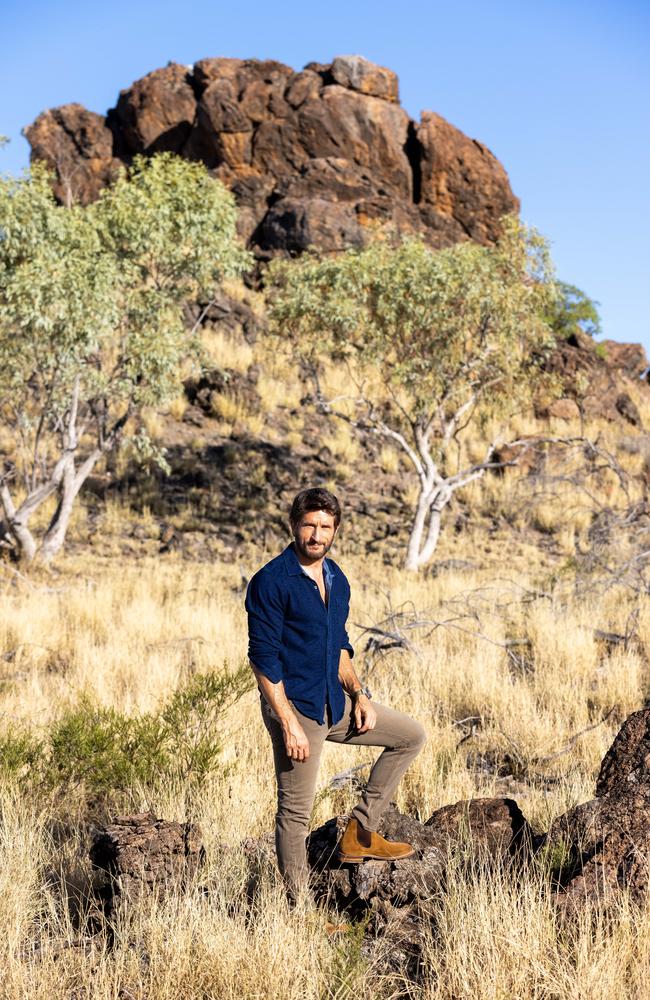
LaPaglia, a well-known Australian actor alongside his brother Anthony LaPaglia, has hosted all six seasons since 2016, and has himself been living in a rented house in Cloncurry for the past six weeks.
“I’ve lost track of time. It feels like a year and it feels like two days. Time is elastic out here,” LaPaglia, 51, says, sitting down with the crew for a catered lunch after the latest challenge. Afterwards the set is abuzz with activity as its dismantled as quickly as they set it up.
“This is one of the most difficult seasons I’ve done just in terms of the environment, there’s lots of travel every day … and it starts grinding, it starts beating you up.”
The actor has filmed the past five seasons in Samoa and Fiji before the global pandemic cancelled the production of the new Brains V Brawn season in April, 2020.
It forced producers to look within Australia, which eventually saw the crew of 300 city blow-ins move to Outback Queensland for two months.
“Initially I thought they were going to choose coasts, so I was surprised when they said the Outback but I think it’s added a really interesting element to the show. The conditions are so difficult,” LaPaglia says.
“The temperature when we first came out was pretty extreme – although the locals will say, ‘oh that’s nothing’ – but it was 35 or 36 degrees every day and it’s a really intense heat that ramps up and continues to stay at 36 degrees for four hours after sunset.
“And then there’s other things in the environment; there’s plenty of things that will kill you.”
LaPaglia rushes off to find his phone and opens it up to show me a photo of himself, wide-eyed with a wild snake curling around his neck, a morning gift from local snake wrangler Larry Hartig, who was relocating the snake away from the set.
When I tell him he looks a little concerned in the photo, he replies firmly: “I was a lot concerned, the lighting is not good, that is a lot concerned.”
“I think the land is more difficult to live off compared to Fiji,” he continues.
“There’d be coconuts … stuff they can get from the jungle, but here there is no jungle for them. It adds a whole other level to it, a level of survival.”
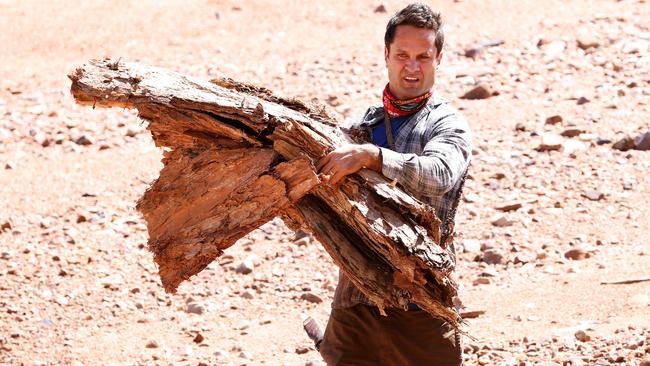
When the pandemic broke out in March, filming on Survivor was rescheduled to November. But still unable to return to Fiji, production company Endemolshine began the search for a safe haven.
They approached Screen Queensland, which was already attracting continued interest from other stranded international production houses, and began scouting for a new location for the popular series.
“Screen Queensland was thrilled at the opportunity to attract such a stellar series to Queensland,” chief executive Kylie Munnich says.
“We worked closely with them to find the perfect location to really highlight the beauty and diversity of our state.
“Cloncurry was chosen as the perfect destination offering a uniquely Australian backdrop for the famous challenges of Australian Survivor and an exceptional landscape that would prove a true challenge.”
The Curry, as it’s affectionately known to locals, is a characteristic outback community, 120km east of Mount Isa, the birthplace of the Royal Flying Doctor Service and true iteration of Queensland outback life, with 3,000 locals surviving on the core industries of grazing, transport, copper and gold mining.
The previously drought-ravaged community had suffered through an unprecedented flooding event in 2019 that isolated the town for weeks and devastated the lifeblood cattle industry, leading to a recordCouncil capital works spend of $60 million that financial year to begin a long economic recovery.
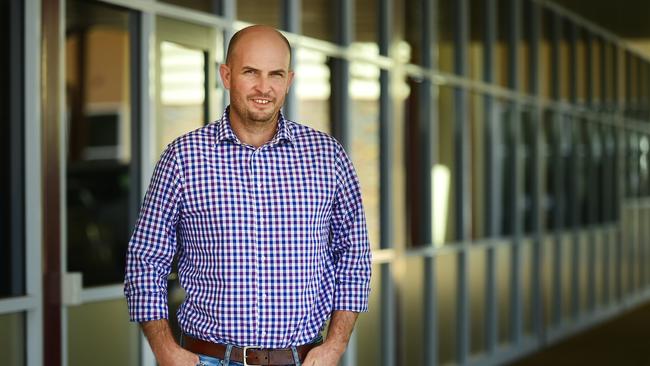
The chance to be involved in a reality TV production emerged as an unexpected but highly-lucrative opportunity for the region.
“Before COVID-19, Cloncurry was hit hard during the floods. It’s great to have Survivor playing a part in the town’s economic recovery,” Queensland Premier Annastacia Palaszczuk says. “The environment always plays a leading role throughout the series. Cloncurry is an iconic destination in Outback Queensland.
“Securing Survivor for Queensland will enable images of some of our most idyllic landscapes to be beamed into millions of homes in 25 countries.”
In late October Endemolshine approached Cloncurry Shire Council Mayor Greg Campbell, who was instantly determined to make it work as he looked to tourism as a new way to boost a region already built on survival for its hardened locals.
“We’ve been putting a focus on doing things that are different to what our core business is in Cloncurry … so we were very excited,” he said.
“We know that the Outback is a tough place and for anyone that does live here we take our hats off to the Aboriginal people who did live solely off the land.”
“The Outback is just booming with Australian tourists coming through the area. Once international borders open a year or two down the track we’d love to have some Survivor-angled product so we can attract people to come to Cloncurry to get a Survivor experience here.”

By April, 300 crew descended on The Curry, where they spilt out of the local Gidgee Inn Hotel, packed the Wagon Wheel pub, where LaPaglia says he had “an excellent meal”, and cleaned the shelves of the local hardware store as carpenters brought in from across Australia designed countless challenge courses.
They filmed 24-hours a day, seven-days a week generating more than 5000 hours of vision, which will be whittled down to 32.5 hours of television across 24 episodes, beamed into homes in 25 countries.
The Channel 10 show, which was also boosted by $3.9 million in Federal Government funding, invested more than $14 million into Queensland, about $5 million of which went back into the 4824 Cloncurry postcode, and created 220 new jobs.
The production was given access to private cattle property, Roxmere Station, which housed the tribal camps, a number of large scale challenges and the tribal council, a small set built in the shadow of an impressive rock structure not far from the station’s homestead and a short walk past a resting mob of emus.
The local council also closed Chinaman Creek Dam for three weeks to allow the production to film water challenges.
Most locals accepted the short closure of the popular spot except for a small incident on the day the tribes merged – a big moment in the series.
The producers heard rustling in the bushes, quickly worrying that paparazzi had discovered the remote set, before realising it was simply a local obliviously taking their buggy out for a spin, and who toddled away with the tip of a hat.
“We’re Queensland’s friendliest town and we have the award to show it, twice, so the vast majority of people were very welcoming,” Campbell says.
“The buzz around town with another 200-odd people in town every day, going to the coffee shop and the shops, it just elevated the whole level of activity.”
He added: “That was the one thing that surprised me: when the scouts first came I said ‘the services for hire companies, generators, tools and hardware, all of that you’ll be able to get without a drama, but you will struggle to get local workers because pretty much everyone that wants a job in this town has got a job’.
“But because of the excitement that it brought we actually had people that took leave from their normal job to work on Survivor …. they got to meet some of the talent and the general consensus was to just show that warm, friendly nature that Cloncurry is renowned for.”
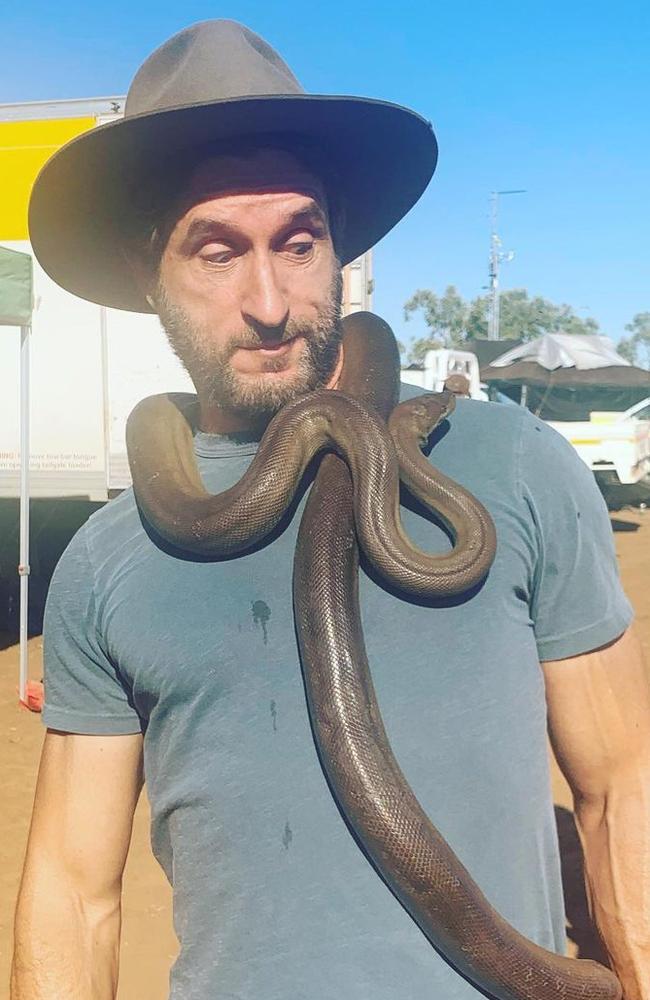
Larry Hartig assumed it was a hoax when he received a message on Facebook Messenger asking if he wanted a paid job catching snakes on the set of a reality TV show filming in Cloncurry.
Snake catching had been his dream since he first saw a snake show at the Curry Merry Muster Festival as a kid. He’s been wrangling snakes for more than a decade now, having returned to the region after 30 years driving trucks around Australia.
“I was stoked. I couldn’t believe it,” Hartig said.
“The opportunity to work on one of the biggest television programs in Australia and to work with such good people I wouldn’t have missed it for the world. It was fantastic.”
“I’d get out of bed in the morning and just look forward to coming to work.”
During the eight weeks Hartig relocated about 60 snakes, including 13 death adders and 15 deadly brown snakes. Memorably, he removed a troublesome 13ft (3.96m) olive green snake from tribal council, which was caught on camera by a crew member.
“He was such a big animal, he was so strong and I loved it,” he grins.
Every member of the crew I meet has a story about Hartig, who had convinced most of them to have a cuddle with a snake, including LaPaglia, whom he handed an olive green to first thing one morning.
“I hadn’t had my coffee for the day so he somehow convinced me,” LaPaglia said.
“Larry assured me it was all fine. I trusted him. And then when I was showing some of the crew afterwards they were like, ‘You’re an idiot; that is a wild snake’.
“I was like, ‘Yeah you’re right, I’m an idiot’. I got the photo. I sent it to my kid (Tilly, 16) and she said, ‘You’re an absolute idiot’.”
Hartig quips: “He was a little (scared) but he was fine. They were all fine. We just had a lot of fun with them. It sort of opened up everyone’s opinion of snakes.”
The passionate Curry local put out an open invitation to all of the crew to come back for a visit so he could properly show them the bush country he loves so much, and eagerly came back to after years on the road.
“I’ve got a few takers,” he smiles. “They were tremendous people to work with and I loved every day of it. I miss them now that they’re all gone.”
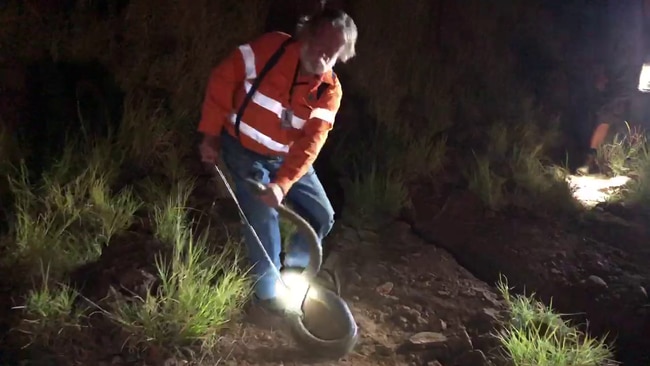
It was a mammoth task bringing the production of a major reality series to Outback Queensland, but a spokesman for Endemolshine says “Cloncurry delivered all of these in spades”.
The exhausted crew left Cloncurry last month, before the series launches tomorrow, gushing about the once-in-a-lifetime two-months living in the red soil town.
LaPaglia stopped off in Brisbane on the way home to spend a few days with his mother, Maria Johannes, who lives in Paddington, before returning to his family in Los Angeles where he would “fall over for about a month”.
When talk of the next season begins soon, Campbell wants producers to know Queensland’s friendliest town, where even the snakes are friendly, will keep their doors open.
“Some of the locals have seen some of the early post production; if we thought our own landscapes were magnificent before, once that little bit of magic of TV production goes into it, it is going to be absolutely unreal how good the area looks,” he says.
“We’d love to see them back again or any other shows. If they’re interested all they have to do is give us a bell.”
Australian Survivor: Brains V Brawn premieres Sunday July, 18 on Channel 10.
The smart way to keep up to date with your Courier-Mail news



